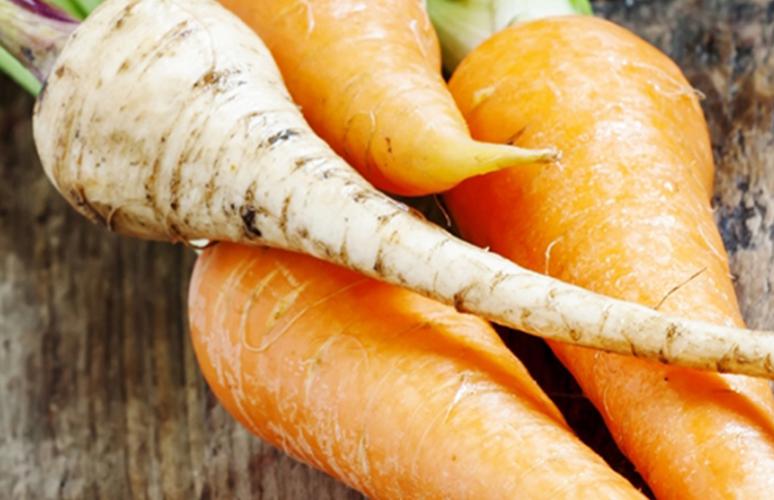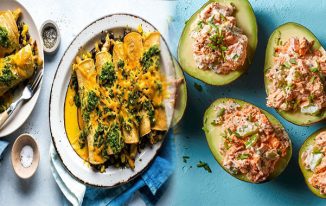Do you ever get home after work and feel stuck for good dinner ideas? For working parents with young families, dinner time is a very important time of the day; and so good dinner ideas are crucial.
For many families, dinner time is one of the few times of the day that everyone gathers around to enjoy a much- needed break and some mouth-watering dishes. So if it’s your turn to make dinner, don’t leave it to last minute, always be prepared with some good dinner ideas. Roots and tubers are just 2 of the 10 classes of vegetables that make wholesome healthy dinners.
Popular tubers and roots are easy to find in many local supermarkets. They are fairly easy to identify by their distinct enlarged shape; but it’s not surprising that most people are unfamiliar with most roots and tubers and tend to mix them up. While both are underground vegetables, true roots are not to be confused with tubers.
ROOTS
Root vegetables are edible roots of a plant. They include carrots, parsnips, swede, turnips, beetroots, radish, celeriac and salsify. They are highly nutritious vegetables with numerous essential properties that promote good health, for example: beetroots are rich in iron and folic acid; swede is said to have cancer protecting properties as well as betacarotene and vitamin C; carrots are a powerful antidioxidant rich in betacarotene, for better vision.
Preparation Tips for Roots:
Popular root vegetables make great healthy dinner ideas, for all occasions. In fact, they make rich, lively and nutritious meals and snacks, for people of all are best served raw, saut?�ed, baked, roasted, steamed or boiled, but the key is to not over-cook, so that their crunchy texture and nutritional value is not lost. Their rich flavour can also be enhanced using fresh herbs and spices.
Radishes, carrots and beetroots are great for salads and garnishing. Once washed, they can be grated or crinkle cut and served crunchy and cold or even warmed, with main dishes. Carrots and beetroots also make great soups and juices. Beetroot juice, in specific, is a strong purple/red dye and can be used to bring colour and life to other dishes.
Turnip, swede, parsnips and celeriac always need a good wash and peeling before use. These roots are best chopped and boiled, braised or roasted, with a little bit of olive oil and some good old seasoning. Salt should always be kept to minimum, if any at all.
Salsify, like most roots, need a thorough wash and peeling or scraping of the hard outer skin, before use. Salsify are also prone to discoloration and therefore once peeled should be placed in salt water or vinegar until ready for cooking.
Preparing root vegetables requires minimal effort. They are fairly easy to cook and can be served within minutes. Roots are also generally crunchy with no pungent odours, making them quite popular for use in salads, soups, casseroles, curries and stews.
TUBERS
Tuber vegetables are the edible tips of plant stems which store food for the plant. They include Potatoes (of which there are at least 40 kinds), Jerusalem Artichoke, Sweet Potatoes, Yam, Taro, Cassava and Jicama. They are packed with energy as well as numerous vitamins and minerals, such as calcium, copper, iron, manganese, potassium and phosphorus. Tubers have been found to be extremely useful in assisting digestion and lowering blood pressure.
Tubers are a good source of complex carbohydrates (carbs). Complex carbs are considered healthier than simple carbohydrates, which are found in some natural and most processed foods. This is because complex carbs take longer to digest and do not rapidly fluctuate sugar levels in the bloodstream. This attribute also makes them a preferred food for weight loss. On the other hand, potatoes and cassava have high levels of starchy sugars which can cause a rapid rise in blood sugar levels and promote weight gain.
Preparation Tips for Tubers:
Tuber vegetables make great wholesome dinners for the family and are in fact a staple food in tropical countries.
Preparation for tubers involves a good wash and peeling of the hard outer skin. It is not unusual for potatoes to be left unpeeled, but this is only safe when there are no signs of greening, sprouting or rotting. Good storage (cool, dry, dark conditions) is essential for retaining freshness over long periods.
Like roots, tubers can be baked, roasted, boiled or fried; however they MUST be cooked well before consumption otherwise can cause discomfort and problems with digestion, due to natural toxins.
Once cooked, tubers become soft and tender, making a rich and satisfying dish. They too can be served as a side dish (whole, chipped or mashed) or added to soups, curries and stews to make a wholesome meal.














